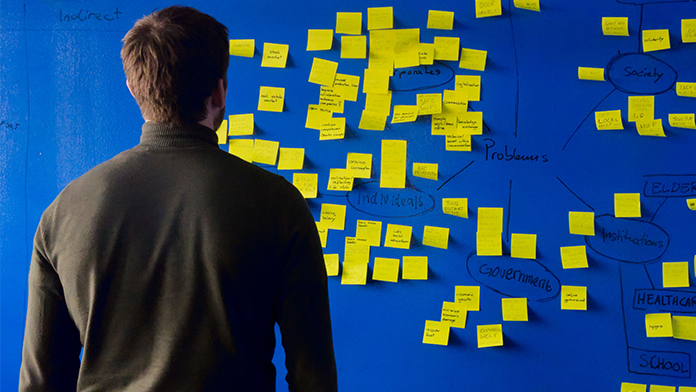
Over the recent years, Agile has proven itself as a reliable approach to project management. Global players use it successfully in many areas of operations. Marketing companies, software houses, and financial institutions profit from this revolutionary attitude. If you are a CEO or a project manager of a startup or run a small or mid-sized company, read the article to see if Agile can help grow your business.
Agile in a nutshell
An Agile is an approach focused on flexibility and continuous improvement. Instead of sticking to a rigid plan (e.g. analyze, plan, design, test, implement, modify), Agile teams deliver tiny pieces of functioning products on an ongoing basis. These small elements can be adjusted and improved as needed within short iterations (1-2 weeks) in constant communication between all interested parties. The Agile mindset is getting increasingly popular as it helps companies to maximize value expediting delivery at the same time.
Benefits of the Agile approach
With a standard (cascade) approach completing a project would take even up to 3 years (while both technologies and requirements could change). In many cases, e.g., in the software development industry, clients can’t wait that long! Agile methodologies help to deliver fast, as well as minimize the risk of failure. This way clients save money on major improvements, getting the product they requested.
Are you interested in the Agile approach? Read more!
SME sector in Europe

The sector of small and medium enterprises develops rapidly. According to European Commision annual report on SME, Micro, Small and Medium Enterprises are up to 99.8% of the total number of businesses, with a value of 3,338,286 mln euros. Many of these enterprises are in the digital transformation process, which is why they need to implement solutions and tools to embrace the remote workforce.
Why implement Agile in a small company?
Better remote collaboration
Agile tools (Scrum or Kanban boards) are perfect for remote collaboration, and daily meetings used in Agile frameworks help you to keep an ear to the ground even if you and your team are located elsewhere and do not seat together in the office.
Improved workflow management
All those who run businesses know that in the world of constant “ASAP” even small teams struggle with multitasking and an overwhelming number of tasks. Agile methodologies help to tame the chaos with visualization techniques, prioritize tasks and avoid bottlenecks.
Faster delivery
one of the questions project teams face, is “when?”. “When will you deliver a product?”. “Will the order be completed on time?”, “How much time do you need?”. In Agile, teams deliver valuable products faster, because after a week they can deliver 1 small yet working element. And the client – provides feedback quickly if something needs improvement.
Efficient communication

Good communication helps you to keep track of work and ensure all issues are addressed or planned to be taken care of. In Agile, ongoing contact with team members, business representatives and involved stakeholders is part and parcel of day-to-day work.
The power of team
Agile emphasizes the importance of teamwork. Your team will have many opportunities to discuss their tasks, show their commitment and support each other. This way, you can use the Agile methodology to build a well-organized team of people who take responsibility and simply – rely on each other.
Will Agile work for companies from the SME sector?
Agile frameworks, like Scrum, Kanban, XP, or Lean, offer tools for effective project management. These can be successfully implemented in companies employing up to 250 people. For example, Scrum teams should ideally consist of 10-12 people which fosters collaboration and efficiency.
Which Agile framework is the best for small businesses?
There are several agile frameworks to choose from. You may be wondering which one is right for your business. Below we present 2 exceptionally popular frameworks.
Scrum
According to the annual “State of Agile” report, Scrum is currently the most popular and most frequently used Agile framework. It owes its popularity to simplicity and applicability to small project teams. The teams working in Scrum are cross-functional – they are not divided into roles which means everyone has the required skills to achieve the goals. Such a team does not have a leader, but the Scrum Master and Product Owner play an important role here.

The former helps in everyday work, making sure that the rules described in the Scrum Guide are followed. Scrum Master is a servant-leader who acts as a facilitator. The Product Owner, in turn, makes sure that the team is moving in the right direction. PO sets priorities to carry out within weekly or bi-weekly iterations. All this brings the team closer to success. Furthermore, teams take advantage of regular meetings (a.k.a. Scrum ceremonies) to keep track of work.
Kanban
Have you ever struggled to manage 10 issues at the same time? According to psychological research, handling too many tasks significantly lowers performance. Minimizing work in progress (WIP), in turn, helps to focus on completing tasks. If your team struggles to finish their work on time and you search for the reason – Kanban and its techniques may help you to identify obstacles and bottlenecks. Kanban is also a popular project framework, yet – not as widely described as Scrum. It is willingly used by small project teams which want to improve workflow and identify inefficient processes. In Kanban, there are neither roles nor responsibilities. Everyone should be involved and show their commitment. Kanban takes advantage of visualization boards to manage workflows. There are several great online Kanban tools, many of which are available for free in their basic versions (for example, Trello, and Asana).
How make it through the Agile transformation?
As you can see, there are many benefits of the Agile approach. Frameworks such as Scrum and Kanban can be successfully employed in small project teams. If Agile is new for you and you do not know where to start, it might be worth taking advantage of outsourcing or consulting services. Also, if you have not decided yet, which Agile framework to use, you can hire an Agile Coach or Agile consultant and benefit from professional advice.














